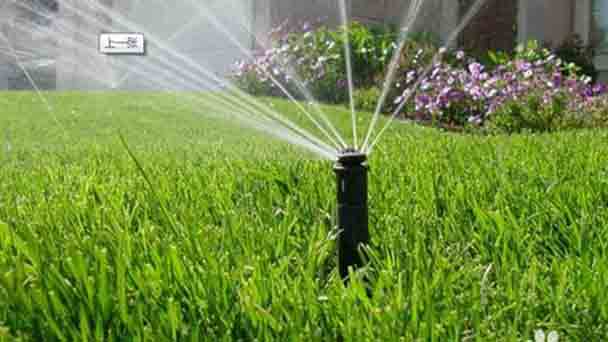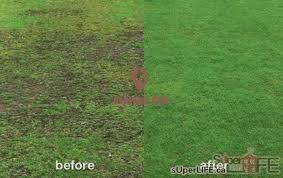Attentions for simply lawn care
Written by Joy
Sep 28 2020

The plan for the year is spring, which is an important time for spring lawn care. If you miss the opportunity to repair, even if the weather is good and the weather is good, the lawn will still be overgrown with weeds, pests and diseases, sparse and even alopecia areata. When the earth is rejuvenating and everything is recovering, we must seize the opportunity to trim the lawn. This will not only save a lot of troubles in caring for the lawn in the following summer and autumn, but also prolong the time of green grass. The growth and care of the lawn will lay a good foundation. In this passage, we will take a look at the related matters of spring lawn care.

1. Watering in summer
As the temperature rises, the watering frequency of the lawn must be adjusted in time to prevent the lawn from drying out and turning yellow. In the case of windy, hot and dry weather for a long time, the frequency of watering should be appropriately increased on the basis of normal watering frequency every week. Irregular watering time will make the lawn more vulnerable to damage.
2. Proper watering
Insufficient watering may weaken the resistance of the lawn, making the lawn vulnerable to diseases and weeds. Excessive watering will cause the lawn to be hypoxic, leading to physiological diseases and root damage. Florists should make full use of irrigation or rainfall to ensure that lawns in the growing season can get enough water.
3. Environmental protection
Fertilization should pay attention to environmental protection when fertilizing lawns. After fertilization, the spilled chemical fertilizer should be removed in time and the driveway should be cleaned to prevent the spilled chemical fertilizer from entering the streets and sewers with rain or other runoff, thereby causing waterway pollution.
4. Controlling Pests
Lawns that lack good maintenance are vulnerable to insects. Therefore, before using pesticides, you should first check the fertilization, irrigation and weeding measures of the lawn. The improvement of these measures can not only reduce pests, but also make the lawn more healthy and beautiful. The larvae of several insects chew the roots of grass in spring and summer, causing damage to the turf. Irrigation is the best way to deal with these larvae. If the larvae are near the surface of the soil, pesticides can also be effective. You should use insecticides to remove pests in early and mid-July.
5. Decorate the lawn
If you want to trim the lawn in the lawn similar to the strip or block pattern in the professional baseball field, you can use the round trip pruning method. Using the back-and-forth pruning method to mow the lawn can bend the blades in opposite directions and refract the sunlight in different directions, thus forming a difference in grass color.
6. Reducing the amount of fertilizer
If you recycle scraps instead of discarding cut scraps, it is better to recycle scraps by using a scraping lawnmower or increasing the frequency of mowing. These broken grasses not only do not form a layer of withered grass, but also provide valuable nutrients for the lawn, thereby reducing the amount of fertilizer.
7. Use herbicides
When you control broad-leaved weeds and dandelions and other broad-leaved weeds that appear in spring, generally use herbicides that specifically remove broad-leaved weeds to remove them. Among the herbicides designed to eliminate broadleaf weeds, liquid agents are more convenient to use than granules.
8. Lawn loosening
Lawn loosening can use special aeration equipment, but the aeration process is relatively slow. If the lawn does not have problems with soil compaction and dead grass, it is not necessary to aerate the lawn.
Latest Updated
- Benefits of Bugleweed - 7 Science-backed Health Benefits
- Bugleweed Dangers & Side Effects - Is It Poisonous?
- How to Plant Evergreen Trees - What You Should Know
- When to Plant Evergreens - Grow Guide for Evergreen Trees
- 12 Wonderful Evergreen Shrubs for Your Garden
- 12 Popular Evergreen Plants with Pictures for Beginners
- When And How To Prune A Lilac Bush Like a Pro
- How to Grow & Care for Lilac Vine (Hardenbergia Violacea)
- Japanese Lilac Tree (Syringa Reticulata) Care & Propagation Guide
- Shumard Oak Pros and Cons - What to Know
Popular Articles
- Winter maintenance of Antirrhinum Majus
- How to Grow Terminalia Mantaly Tree
- How to Grow and Care for Crossostephium Chinense
- How to grow Antirrhinum Majus in spring
- Peristeria Elata (Dove Orchid) Profile: Info & Care Guide
- Underwatered Snake Plant (Sansevieria Trifasciata) - Signs And How To Fix
- How to Care for Brazilian Jasmine Plant (Mandevilla Sanderi)
- How to Grow & Care for Graptopetalum Purple Delight in Summer
- Rosa Chinensis (China Rose): Plant Growing & Care Tips
- How to Care for Baby Sun Rose (Aptenia Cordifolia)